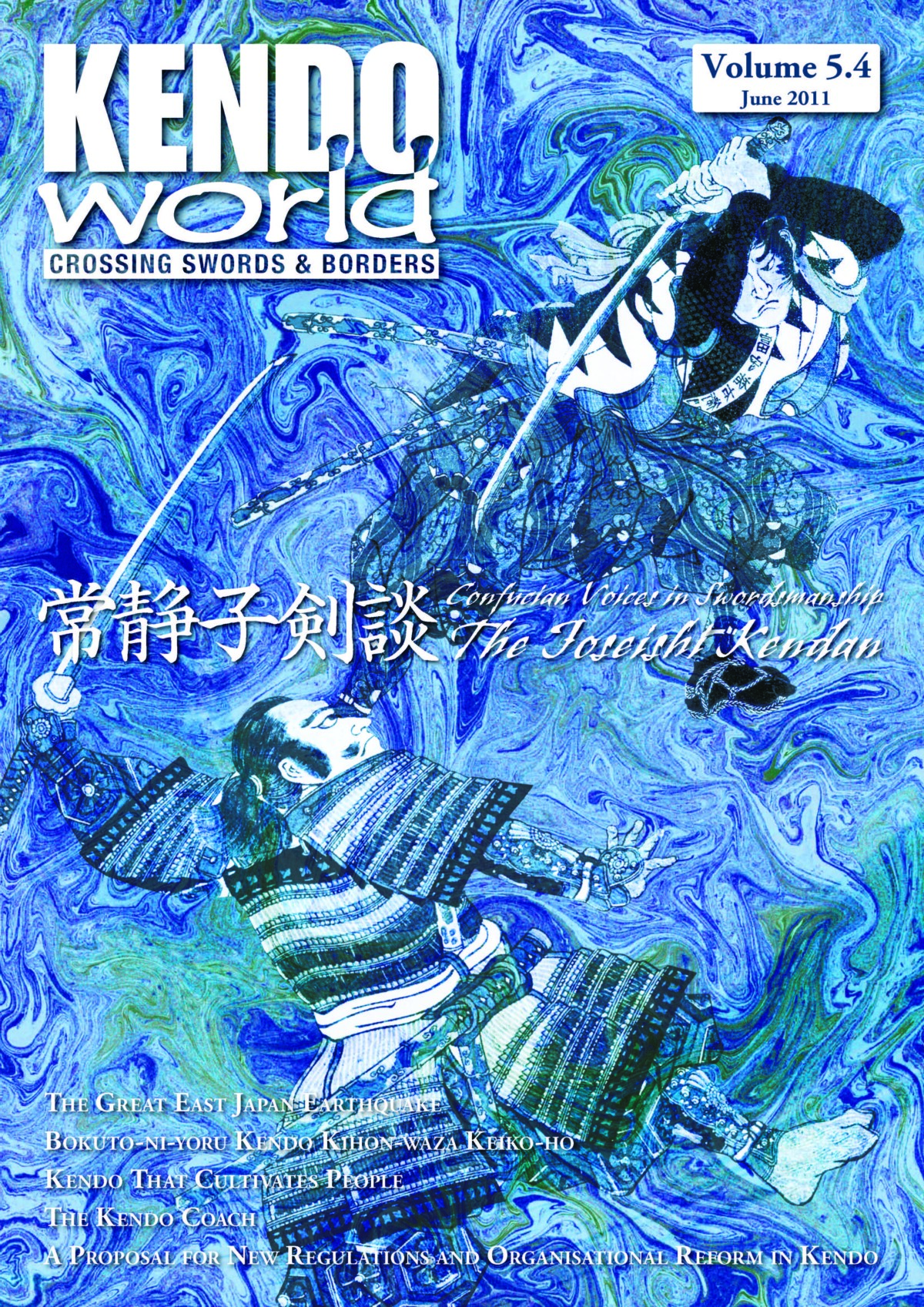
Kendo World 5.4

Editorial
By Alex Bennett
In terms of international kendo, more progress has been made with regards to the implementation of the FIK shōgō system. Shōgōare those slightly confusing titles renshi, kyōshi and hanshi awarded to people with the highest dan ranks of 6, 7 and 8. Alex Bennett introduces the latest developments in international kendo.
The Great East Japan Earthquake
By Michael Ishimatsu-Prime
“At 2.46pm in the afternoon of Friday March 11, 2011, I was sat in the second-floor study of my house in Kawasaki, just a short train ride south of Tokyo. I was trying to finish the long overdue English translation of my kendo sensei’s book when I felt the house shaking. It was unmistakably an earthquake. This is something that I have felt many times before in my eight years in Japan, and as they are such a common occurrence, you tend to get a bit complacent when they come. Indeed, my first thought was, ‘It’s alright, it’ll be over in a second.’ However, it was not. It lasted for over five minutes and turned out to be Japan’s biggest recorded earthquake, finally being upgraded to magnitude 9.0 (M9.0), and the fifth biggest on record anywhere in the world. It was so strong that it would move the earth on its axis, shorten the day by a fraction of a second, and move Japan closer to the United States…” What has the quake and its aftermath meant for expat kendoists? Michael Ishimatsu-Prime relays his experiences in this gripping report.
A Call to Arms
By Antony Cundy
Tony Cundy offers some ideas as to what martial artists can to help Japan as the country struggles to rebuild from the tragic recent earthquake.
Hanshi Says
By Kojima Masaru (H 8-dan)
A series in which some of Japan’s top hanshi teachers give hints of what they are looking for in grading examinations based on wisdom accumulated through decades of training. In this instalment of “Hanshi Says”, Kojima Masaru-sensei introduces his stoic kendo philosophy. Born on January 26, 1924, in Kagoshima prefecture, Kojima-sensei has made a living as a fisherman and then a teacher, eventually becoming an accountant in a company. Kojima-sensei has represented Japan at the WKC, and also competed in the Meijimura Taikai for 8-dan masters. He holds the rank of Hanshi 8-dan in kendo and Hanshi 9-dan in iaido.
Shoryudoh: An Interview with Tanaka Toshikazu
By Baptiste Tavernier
KW staff writer Baptiste Tavernier interviews master craftsman Tanaka Toshikazu about how dō are made. Tanaka-sensei is one of the few craftsmen still alive who can lacquer dō in the traditional way. He has many enlightening insights into the dying art of bōgumaking in Japan.
Nuts ‘n Bolts of Kendo
Nakano Yasoji (H 9-dan)
The components of yūkō-datotsu are usually summed up with the term ki-ken-tai-itchi (unison of spirit, sword and body). However, kendo legend Nakano-sensei described it is really shin-ki-ryoku (mind, spirit and technique). This is much broader in meaning than ki-ken-tai-itchi, and he believed it connected more closely with the concept of “character development” which is a key objective in the study of kendo. Nakano-sensei delves deeply into the less tangible aspects of a valid point in kendo.
Reidan-Jichi Part 11: “Striking”
By Prof. Ōya Minoru
In his highly acclaimed on-going series, Ōya-sensei breaks down the components of a kendo strike. During the cut and thrust of seme-ai, it is ineffective to strike at points where your opponent’s defences are still intact. You should only strike when there is an opportunity to strike. This does not mean taking advantage of a chance opening. You should always be aggressively probing your opponent, aiming to create a breakdown in his or her defences or some movement that leads to an opportunity to strike. Such opportunities are almost infinite in kind… How can they be identified and utilised? Ōya-sensei has the answers.
The Kyoto Embu Taikai – The Ultimate Kendo Experience
By Donatella Castelli
“The Embu Taikai that takes place every year in May at the Butokuden in Kyoto, was presented to me as a sort of mythical event since first I started kendo in 1985. The accounts were sketchy – some sensei must have told someone who told someone else… But my sempaiinsisted that thousands of kenshi would meet in a century-old hall near a temple to fight for days on end. To be allowed to watch such an extraordinary event must be such a privilege I thought! And I promised to myself that one day I would find that legendary hall and finally see if it was real or just a fantasy.” Donatella Castelli, a 6-dan from Italy, tells us about here connection with this amazing kendo event.
sWords of Wisdom: “No need for the strength of demons”
This instalment of words of wisdom left by kendo sages of eras gone introduces the life of Ono Jirōemon Tadaaki (?~1628). The famous school of swordsmanship which the modern art of kendo is largely based on in terms of technique and theory ‒ the Ittō-ryū ‒was created by Itō Ittōsai. However, it was his student Ono Jirōemon Tadaaki who greatly developed the school and its teachings during the Tokugawa period. He was first known as Mikogami Tenzen, and he already had a formidable reputation as a swordsman before his fateful meeting with Ittōsai…
The “Shinai-kyōgi” Experiment
By Dr. Alex Bennett
Following Japan’s defeat in the Second World War, the martial arts were banned by Occupation authorities as they were considered to be “undemocratic” and conduits for imparting “ultra-nationalism” and “militarism”. All the budo arts were subject to the ban, but kendo was viewed as being particularly unsavoury due to the symbolism of the infamous Japanese sword. In reality, there were many diehard kendo enthusiasts who continued practising away from the wary eye of the authorities, but kendo in schools was absolutely prohibited. It was gradually reinstated again in part through the creation of a hybrid sporting version of kendo known as “shinai-kyōgi”. Alex Bennett takes a look at the historical significance of this development.
Pedagogical Opportunities and Challenges of Teaching Budo
By Dr. Stepehen Nagy
Beginning in September 2010, Dr. Nagy began teaching a university level course entitled “Japanese Budo: Tradition and Transformation from the Edo Period to Today” at the Chinese University of Hong Kong (CUHK). Teaching a new course is always fraught with challenges, especially regarding course content and pedagogical approaches to learning. This article aims to address some of the problems he faced from the perspective of a scholar and practitioner of kendo, iaido and aiki-budo. Through introducing and discussing the “Pedagogical Opportunities and Challenges of Teaching Budo”, Dr. Nagy sheds light on teaching possibilities and novel approaches to a more rigorous yet interesting way of learning about budo in an academic setting.
The Refinement Practice Sword
By Michael Ishimatsu-Prime
The Sei-ren-tō, or “Refinement Practice Sword” (RPS) to give it its English name, is the same size and shape as a regular bokutō, but is made from a lightweight flexible steel tube covered with a shock absorbing material making it lighter than a regular wooden bokutō. Michael Ishimatsu-Prime introduces the latest piece of kendo equipment on the market.
Training Method for Fundamental Kendo Techniques with a Bokutō
By Alex Bennett
Some highly ranked members of the AJKF considered the Nippon Kendo Kata to be too advanced to teach basics to novices, even though this was the reason why it was originally created in 1912. This does not necessarily signify an evolution or devolution of modern kendo, but simply a change in the needs of modern practitioners. It was recognised that there was a need to facilitate a more pragmatic approach to learn basic techniques. A special committee was inaugurated in April 2000 to investigate creating a new “kihon kata”. By June 2001, nine basic forms for teaching children and beginners were selected. These are known collectively as the “Training Method for Fundamental Kendo Techniques with a Bokutō”. Alex Bennet takes a look at how it came about, and its potential uses in kendo training.
Building the Garden
By Aurélien Lainé
“One year in Korea means renewing my visa, and to do so I needed to get out of the country to get it printed on my passport and go to a Korean embassy or consulate. Being on a budget, I needed a cheap and quick way to do it so I could be back to work in no time. That is where the infamous visa run to Fukuoka kicks in: 4 hours bus to go down south to Busan and then 3 hours on the boat to Fukuoka, present your passport and 24 hours later it is done. In the meantime I brought some work as I couldn’t take holidays from my job. That didn’t give much time for kendo while in Fukuoka. However, something else happened, something deeply valuable for my kendo practice…”
It’s Academic: Notes from the Japanese Academy of Budo
The Research Journal of Budo is the society’s refereed journal in which scholars can present the findings of their research in the public domain. It is published four times a year with the assistance of the Nippon Budokan. The contents of the journal are now available to members on the “Articles Database” accessible through the academy’s homepage. In this section of Kendo World we will introduce two or three research abstracts from the plethora of research available. In this issue, we will take a brief look at some of the papers published in 2006‒2007.
Unlocking Japan
By Lockie Jackson
“I’m easily irritated. Sure. Little things tick me off. Even in Japan, a country stereotypically renowned for the currency it affords etiquette and self-restraint. I can’t stand people who snort phlegm in meetings, sigh “atsui ne” (Hot, isn’t it?) in saunas, or fall asleep on my shoulder while riding public transport. Call me old fashioned, but to me, such conduct displays a gross lack of self-awareness…” Find out what bizarre experience in Japan has irked Lockie’s girdle this time in “Lessons Learned”!
A Duffle Bag & a Bogu Bag Part 7: Promoting Kendo to the World
By Imafuji Masahiro
“How are you doing with promoting kendo in your community? Do you have people who live about 1.5 hours or two hours from your dōjō who lament that they cannot come to every training session? What do you usually say to these people? How about this scenario? Young teenagers come to see kendo. And the reason that they wanted to learn is because they like “Rurouni Kenshin” What would you do with these folks?” Imafuji-sensei shares his thoughts after years of experience teaching kendo in foreign countries.
DVD Review
Tyler Rothmar reviews a recent DVD documentary about katana forging titled “Art of the Japanese Sword”.
Kendo That Cultivates People Part 12: Further Development
By Sumi Masatake (Hanshi 8-dan)
In the latest instalment of this highly acclaimed on-going series by Sumi-sensei, the importance of rei and courteous behaviour, and the right attitude is discussed in the scheme of kendo development. “Training in kendo is often compared with the three-stage process of shu-ha-ri, however it is quite difficult to identify at which point you are situated in the spectrum and when you should progress to the next stage. Rather than contemplate this, it is more productive to consider the depth of your understanding of the art of kendo and focus on your own mindset. How far you are progressing on a technical level is important and but if you are not in full psychological control of your emotions then you will not be able to progress to higher levels…”
The Kendo Coach: Sports Psychology in Kendo Part 5 — Literature Review of a Social Psychological Issue: Team Cohesion and Team Goal Setting
By Blake Bennett
The topic of team cohesion, especially in a sporting context, is a broad ranging one. And, within this abundance of research and literature there is evidence to suggest that team goal setting can be used as a method to increase team cohesion – as it works to provide a group with a common focus and direction. By exploring the literature, this article will seek to outline the specific aspect of team goal setting as a method to increase team cohesion and unity within the dōjō – primarily with young athletes. Then, by providing critical discussion around the use of this method, a focus on the coaching considerations will highlight the crucial factors determining the success of a team goal setting session on team cohesion.
Becoming One with the Sword
By Taylor Winter
The katana, imbued with the “soul of the samurai”… It is even said that when a samurai drew his sword, they became one. But, could this extend beyond metaphor? Could this be more than some corny jargon that your sensei mentions on occasion? It seems with the advent of modern psychology we are ever encroaching on an answer. One could postulate that such an answer could be paramount in gaining a deeper understanding of the psychological aspects of kendo.
Confucian Voices in Swordsmanship: The Jōseishi Kendan
By Christopher Hellman
The older Japanese martial arts, or bugei, are often associated with spiritual and philosophical systems of belief. Confucianism, a philosophy which had a great influence on many areas of Japanese culture, has received relatively little consideration in this regard ‒ it is more typically associated with moral or theoretical issues such as the development of bushidō. However, there are writings from the Edo period (1600‒1868) written by master swordsmen that point to Confucianism playing a very substantial role in the training of a warrior on many levels, from basic attitudes towards training to the deeper mental and psychological teachings that formed the core of the martial arts. Few of these works are familiar to an English readership, and thus their important influence has been largely overlooked. To redress the balance, here Christopher Hellman discusses one of several such works, and briefly outlines the nature of Confucian influence to give readers some idea of its scope and depth.
Connecting Oceanic Women: A New Seminar on Aiki
By Kate Sylvester
The first half of 2011 has seen a new event in Antipodean kendo – a seminar and taikai held exclusively for women. Over a hot weekend in February, women kendōka from across Australia and New Zealand came to Sydney to attend the inaugural Oceanic Women’s Seminar and Taikai, presided over by two Japanese female instructors. KW staff writer Kate Sylvester was there to report on the proceedings and meaning of this event.
Unmasking Japanese Women’s Kendo
By Kate Sylvester
This paper by Kate Sylvester investigates the embodiment of gendered identity through the practice of kendo in Japan. In particular it engages with the construction of feminine identity within a traditionally masculine activity. The paper examines the complex hierarchical relations and feminine role within a Japanese kendo club. Martial arts such as kendo provide women with an opportunity to practice sports that have the potential to challenge traditional gender roles and constructions of the body. Conversely, a kendo club can in some ways reflect pre-modern Japanese society where cultural practices that can emphasise etiquette, spiritual strength, hierarchy and lower positioning of women are performed. Get an overview of Kate’s ground-breaking research into the positioning of women in the world of kendo.
A Proposal for New Regulations and Organisational Reform in Kendo
—An Attempt to Make Kendo More Comprehensible for the World—
By Ōtsuka Tadayoshi (Translated by Alex Bennett)
This thesis was originally published in Ōtsuka-sensei’s last book “Kenshi ni tsugu” (A proposition to kenshi) in 2005. Ōtsuka-sensei was known as a talented swordsman, meticulous scholar, generous educator, and certainly one not averse to throwing a cat among the pigeons, as this article will reveal. Unfortunately, he died of cancer in 2005. Some of his ideas were very radical, but they provide much food for thought, and I was honoured to have been asked by him to translate this paper for inclusion in the book which KW has received permission to republish for the wider international kendo community… “The so-called ‘Concept’ of kendo and its ‘Regulations’ are fraught with contradictions and pitfalls. It is because of the various inconsistencies inherent in modern kendo that I would like to propose a new set of rules (hereinafter referred to as the New Regulations) which will facilitate techniques that are easy to discern, convincing, and poignant…”
Dojo Files: May the Fourth be With You…
Five members of the Hutt Kendo Club, located in Lower Hutt, Wellington, New Zealand, recently visited Japan to celebrate the 10thanniversary of the founding of the club. Ever wondered what it would be like to take a dream trip to the home of kendo with your club mates? The latest club featured in Dojo Files may give you some ideas…
Shinai Sagas: “The Coming of Spring”
By Charlie Kondek
Charlie Kondek has produced yet another thought provoking kendo short story. Although the “Shinai Sagas” are fictional accounts of everyday people coming to grips with the trials and tribulations of walking the kendo path, the themes he touches on are all things we can relate to. In “The Coming of Spring”, we feel the anguish and doubt that the protagonist Nygaard experiences as he sits his 4-dan examination.
Jukendo no Kata Part 4: Tankendo no Kata
By Baptiste Tavernier
Tankendo literally means “the way of the short sword”. It is in fact the art of detached bayonet, as devised by the Japanese army during the Taishō period. Tankendo is nowadays an allied discipline of jukendo, within the All Japan Jukendo Federation. It encompasses kata and bōgu practice. Interestingly enough, during the Shōwa period tankendo eventually fell under the influence of some high-ranked kendo instructors: the use of curved kodachi with tsuba instead of straight wooden bayonet became widespread; a few techniques were modified to look more kendo-like, and kirikaeshi was introduced as well. Although this trend is still present in modern tankendo, practitioners must never forget that their actual weapon is a chokutō, a straight blade with no tsuba, and that rather than cutting, the main technique in tankendo is thrusting. KW staff writer and resident jukendo expert, Baptiste Tavernier introduces the Tankendo no Kata for the first time in English.
AVAILABLE ON KINDLE AND THE BUDO BOOKS APP IN E-BOOK FORMAT! SEE THE LINKS BELOW!!


















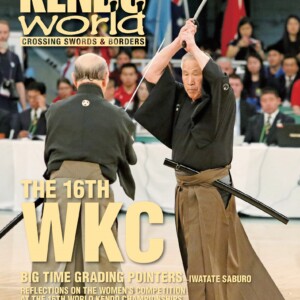

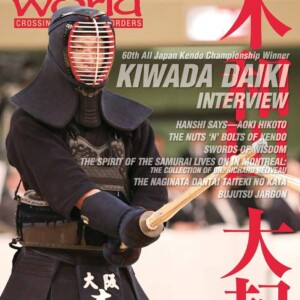

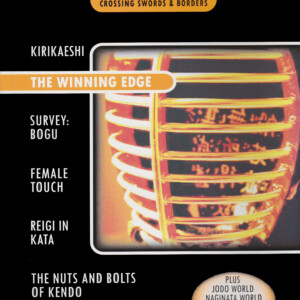
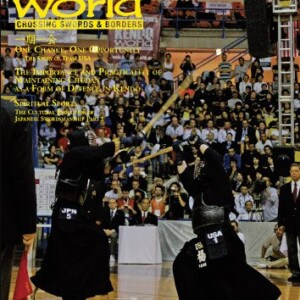
No comments yet.